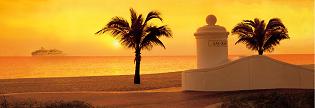Synopsis: Silicone Hydrogels at ARVO 2006, Part 2
 This year’s ARVO meeting included poster and paper sessions addressing a number of key issues relating to silicone hydrogels. Part one of this synopsis will look at presentations addressing dry eye and tear film, solution compatibility and silicone hydrogel materials. This year’s ARVO meeting included poster and paper sessions addressing a number of key issues relating to silicone hydrogels. Part one of this synopsis will look at presentations addressing dry eye and tear film, solution compatibility and silicone hydrogel materials.
Dry eye and tear film
R.N. Borazjani and colleagues (Bausch & Lomb) evaluated the ability of a new multi-purpose eye drop – a mixture of a cationic cellulosic polysaccharide and a polymer surfactant – to enhance comfort during extended wear of silicone hydrogels. Results showed that this drop was able to successfully manage lipid and protein deposits on in vitro lenses.
Noel Brennan and colleagues (Brennan Consultants) conducted a retrospective study investigating whether silicone hydrogels are able to alleviate end-of-day discomfort with daily wear. Results showed that balafilcon A and lotrafilcon B are generally not more comfortable at end-of-day than etafilcon A, hioxyfilcon A, omafilcon A and polymacon lenses over a period of at least one month of extended wear. The investigators noted that this may be due to the fact that most of the study subjects were adapted hydrogel wearers, whereas silicone hydrogels may become more comfortable over longer wearing periods.
Carole Maldonado-Codina and Philip Morgan (Eurolens Research) investigated the in vitro wettability of galyfilcon A, lotrafilcon A, lotrafilcon B, senofilcon A and balafilcon A lenses, using the sessile water drop technique to measure contact angles of lenses straight from the packaging solution and after soaking in saline for 48 hours. Though the contact angles were significantly different for all lenses except galyfilcon A and senofilcon A, results indicated that the surface active ingredients present in the packaging solutions lowered the contact angle of all lenses investigated.
M.M. Lira (University of Compostela) and colleagues evaluated the effect of galyfilcon A, balafilcon A, lotrafilcon A, lotrafilcon B, and etafilcon A lenses worn on a daily wear basis. Tear film volume and stability was measured in neophytes, both before and after 6 months of contact lens wear. Though the results of this study were not statistically significant, they indicated that tear film stability decreases and tear film quantity increases after all contact lens wear.
Solution compatibility:
G.J. Andrasko (LLC Research Practice, OH) and colleagues (Alcon) investigated the compatibility of silicone hydrogel lenses with multipurpose solutions. Balafilcon A lenses showed significant staining in combination with 2 different PHMB-containing solutions. A polyquad-based solution had consistently lower staining averages across all brands of silicone hydrogel lenses. All staining was micropunctate.
K.A. Lebow and J.L Schachet (private practice) also found significantly less corneal and conjunctival staining with a polyquad care system compared to an Alexididine-preserved solution, when used with silicone hydrogel lenses. M. Itoi and M. Kudo, (Itoi Eye Clinic, Japan) and colleagues also found that a polyquad-based system and a peroxide care system produced the least amount of staining, in conjunction with daily wear of lotrafilcon A lenses – compared to a PHMB-based system.
Materials
J. Gonzalez-Meijome (University of Minho) and colleagues investigated the repeatability of topographic measurements of five different silicone hydrogel polymers using atomic force microscopy. Results showed that different materials had different surface topographies, and qualitative analysis of repeated readings showed consistency between different samples of the same material. These results indicate that atomic force microscopy allows researchers to make reliable estimations of the mechanical properties of contact lens polymers, and is able to show nonometric differences in topographic profile of the surface in addition to estimating the modulus and adhesion of the surface of hydrated contact lenses.
M Guillon and C. Maissa (OTG Research and Consultancy) conducted a study comparing the clinical performance of galyfilcon A (not surface-treated) and lotrafilcon B (surface treated with plasma) lenses, in terms of ocular tissue tolerance and on-eye wettability. Subjects wore the contact lenses, which were replaced weekly, on an overnight basis. Though neither lens produced much corneal staining, lotrafilcon B produced marginally more limbal hyperemia and significantly more conjunctival indentation. The eyes wearing galyfilcon A had significantly better tear film structure at the front surface of the contact lens, in addition to thicker lipid and aqueous layers.
Philip Morgan, Nathan Efron (Eurolens Research) and colleagues (Brennan Consultants, Australia) measured the oxygen permeability of galyfilcon A, senofilcon A, lotrafilcon A and B, and balafilcon A using a polarographic measurement method. With the exception of lotrafilcon B and balafilcon A, values found were roughly similar to the values claimed by the manufacturers.
Stay tuned for part two of this synopsis next month, which will focus on therapeutic uses for silicone hydrogels, infection, lysozyme and lipid deposits, and physiology.
Synopsis: Silicone Hydrogels at ARVO 2006, Part 2 |